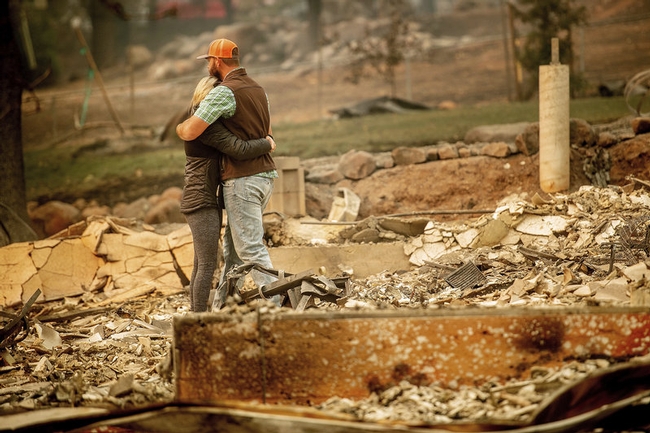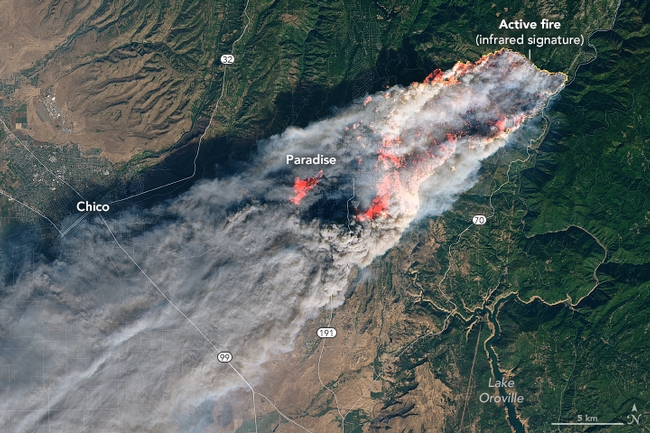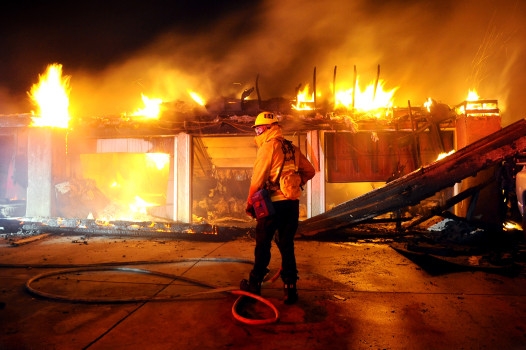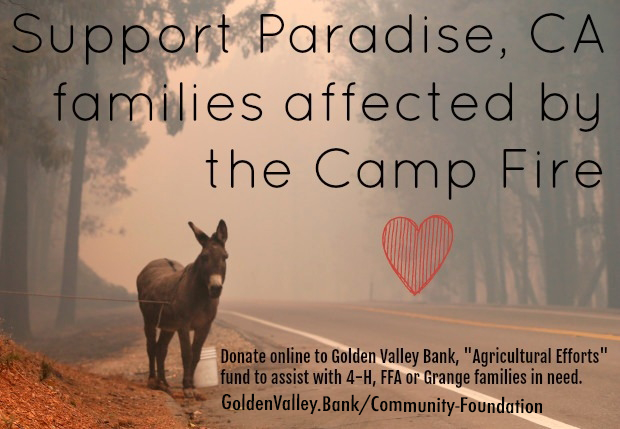
- Author: Jenna Colburn
The past few years California and the nation have faced devastating natural disasters. When we see images of devastation and loss on the news and Internet our first instinct is to mobilize, organize, and help those that are in need.
In the past week California has been hit hard again with wildfires in Butte, Los Angeles and Ventura counties. Currently the brave first responders are still fighting to contain those fires.
Recovery from a catastrophic loss is a marathon, not a sprint.
After the fires are out, there will be a long road to recovery. Fire survivors may go back to survey their properties, but on top of insurance claims and rebuilding decisions, they have to address their immediate needs for shelter. Survivors will need support throughout the long process.
As noted in a Sacramento Bee article, thirteen months ago fires in Sonoma County destroyed about 5,300 homes, including about 2,000 in unincorporated Santa Rosa. Since then, only 598 permits have been issued to rebuild single family homes and only around 30 homes have been rebuilt in the unincorporated areas.
What you can do to help
Map out a plan
If you collect 1000 blankets, who will you give them to and how will you get them where they need to be? Are blankets what are really needed? The only way to answer these questions is to have a good plan with plenty of support in place BEFORE you start your project. This will ensure that your efforts to make a difference will be successful and sustainable.
Contact organizations that are able to accept goods BEFORE you start collecting items. Organizations have different needs at different times during disaster recovery efforts. Unsolicited donated goods such as used clothing, household items, and mixed foodstuff require agencies to redirect their valuable resources away from providing relief services. They will have to sort, package, transport, warehouse, and distribute items that may not even meet the needs of disaster survivors.
Instead: Use the Service Learning Toolkit and Project Planning Guide to help you plan a disaster relief project.
Find reputable local organizations to support
The best way to help in disaster areas is to support relief organizations that are already established in the area.
Some ways to verify relief organizations:
- Give.org- the BBB Wise Giving Alliance
- The State Of California has vetted both volunteer opportunities and organizations that are supporting relief efforts. CaliforniaVolunteers is the state office that manages programs and initiatives aimed at increasing the number of Californians engaged in service and volunteering. Their Current Disasters webpage links to resources for current information on disaster areas in California.
As an individual, you can make personal monetary donations to organizations to support relief efforts.
There are many organizations that are accepting cash donations. The Golden Valley Bank Foundation has set up a fund to directly support 4-H, FFA and Grange members and their families affected by the Camp Fire.
Know our 4-H policy on fundraising and donating to non-profit organizations.
4-H clubs cannot donate cash or fundraise for other non-profit organizations. Please familiarize yourself with the following documents for more clarification:
- Guidelines for Fundraising by 4-H Units and VMOs to Benefit Groups or Organizations
- FAQs for 4-H Units & VMOs - Fundraising to Benefit Groups or Organizations
Create a sustainable Service Learning Project to support disaster relief
With a Service Learning Project, you will participate in the development of community partnerships and share responsibility with community members. You will also take an active role in improving society and improving the quality of life in the community.
Our own 4-H clubs have helped with fire recovery efforts.
Oroville Foothill 4-H Club's fire recovery project was shared in a blog post by 4-H member Donovan Hill.
Use the Service Learning Toolkit and Project Planning Guide
The Service Learning Toolkit and Project Planning Guide can help you plan your disaster relief project.
Evaluate your plan to ensure it is High Service/High Learning using the Standards of Quality in Service Learning. This 10 question checklist will help you determine how to make this a positive learning experience that benefits the community at the same time.
This original blog post from 9/1/17 was updated and edited to include current information. Jenna Colburn is the Program Coordinator for Civic Engagement. If you have any questions regarding creating a service learning project, please contact Jenna at jcolburn@ucanr.edu.



